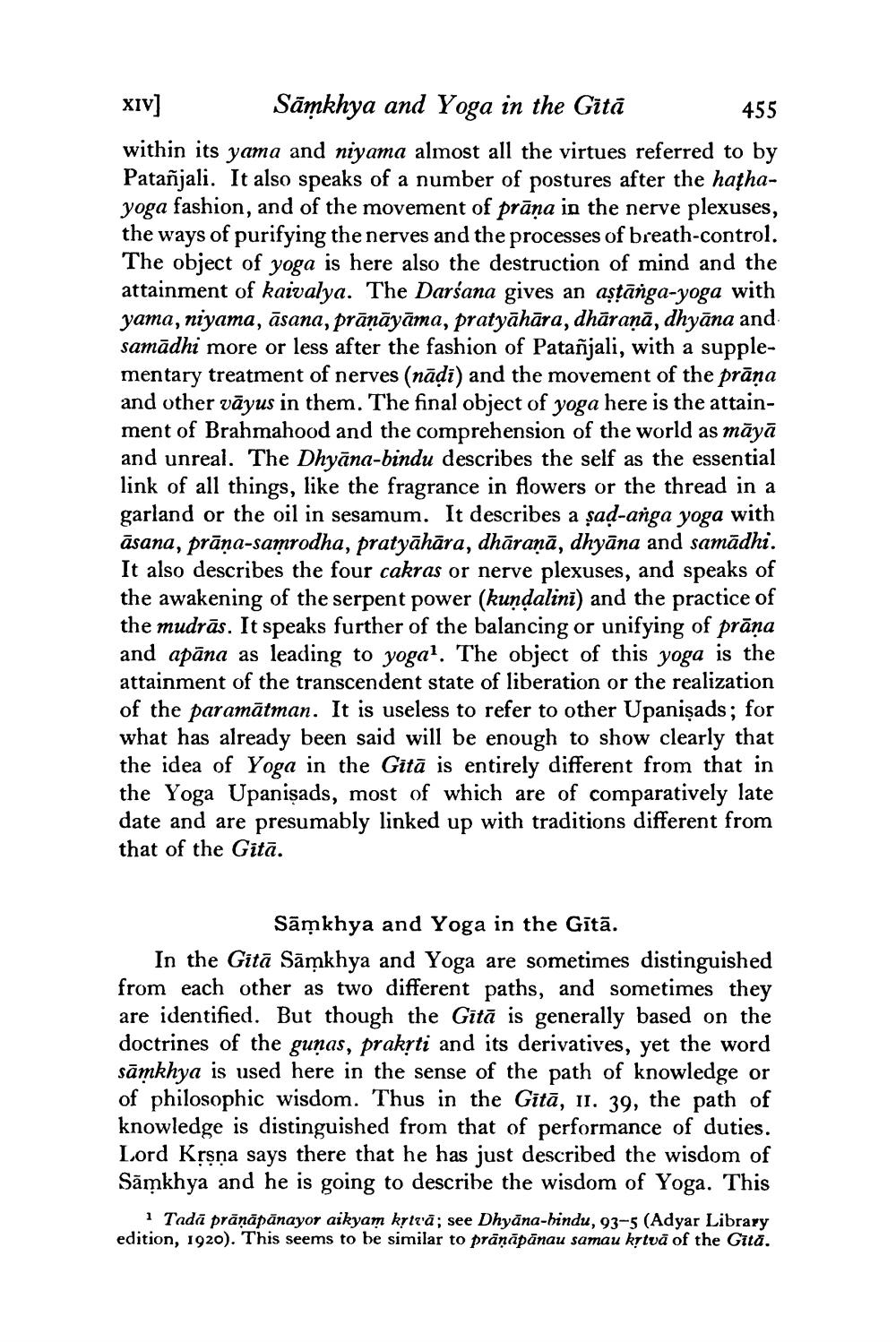________________
XIV]
Samkhya and Yoga in the Gitā
455
within its yama and niyama almost all the virtues referred to by Patanjali. It also speaks of a number of postures after the hathayoga fashion, and of the movement of prāṇa in the nerve plexuses, the ways of purifying the nerves and the processes of breath-control. The object of yoga is here also the destruction of mind and the attainment of kaivalya. The Darśana gives an aṣṭānga-yoga with yama, niyama, asana, prāṇāyāma, pratyāhāra, dhāraṇā, dhyāna and samādhi more or less after the fashion of Patañjali, with a supplementary treatment of nerves (nāḍī) and the movement of the prāṇa and other vayus in them. The final object of yoga here is the attainment of Brahmahood and the comprehension of the world as māyā and unreal. The Dhyana-bindu describes the self as the essential link of all things, like the fragrance in flowers or the thread in a garland or the oil in sesamum. It describes a șad-anga yoga with āsana, prāṇa-samrodha, pratyāhāra, dhāraṇā, dhyāna and samadhi. It also describes the four cakras or nerve plexuses, and speaks of the awakening of the serpent power (kundalini) and the practice of the mudrās. It speaks further of the balancing or unifying of prana and apāna as leading to yoga1. The object of this yoga is the attainment of the transcendent state of liberation or the realization of the paramatman. It is useless to refer to other Upanisads; for what has already been said will be enough to show clearly that the idea of Yoga in the Gita is entirely different from that in the Yoga Upanisads, most of which are of comparatively late date and are presumably linked up with traditions different from that of the Gitā.
Samkhya and Yoga in the Gitā.
In the Gita Samkhya and Yoga are sometimes distinguished from each other as two different paths, and sometimes they are identified. But though the Gita is generally based on the doctrines of the gunas, prakṛti and its derivatives, yet the word sāmkhya is used here in the sense of the path of knowledge or of philosophic wisdom. Thus in the Gita, II. 39, the path of knowledge is distinguished from that of performance of duties. Lord Kṛṣṇa says there that he has just described the wisdom of Samkhya and he is going to describe the wisdom of Yoga. This
1 Tadā prāṇāpānayor aikyam kṛtva; see Dhyana-bindu, 93-5 (Adyar Library edition, 1920). This seems to be similar to prāṇāpānau samau kṛtvā of the Gită.




